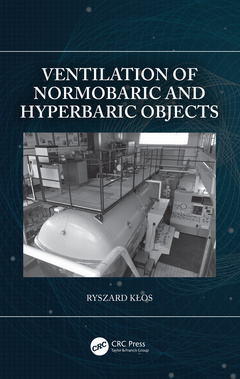Description
Ventilation of Normobaric and Hyperbaric Objects
Author: Kłos Ryszard
Language: English
Subjects for Ventilation of Normobaric and Hyperbaric Objects:
Keywords
Premix Dosage; Shipbuilding; Sanitary Engineering; Diving Techniques; Underwater Technology; Life Support System Design; Dispenser; Submarine; Mining; Life Support Systems; Diving; Normobaric Conditions; Diving Apparatuses; Breathing Gas; Dm 3; Breathing Mixture; Hyperbaric Chamber; Oxygen Partial Pressure; Ventilation Process; Diving Depth; Breathing Bag; Oxygen Molar Fraction; Breathing Medium; Mining Excavation; Breathing Module; Semi-closed Rebreathers; Underwater Breathing Apparatus; Metabolic Simulator; Mass Spectrometer GC; Data Acquisition Modules; Typical Hard Disk; Molar Fraction; FGG; Carbon Dioxide Scrubber; Hyperbaric Facilities
· 15.6x23.4 cm · Hardback
Description
/li>Contents
/li>Readership
/li>Biography
/li>
Considering the increased need to test and develop ventilation both for normobaric and hyperbaric use in underwater technology industries (diving equipment, submarines and other underwater facilities), mining, and other relevant industries, this book presents a complete study in the field of normobaric and hyperbaric ventilation. It focuses on development and verification of the research-based mathematical modeling approach for deterministic modeling of ventilation processes, both for objects with semi-closed and closed circulation of breathing gas. It also proposes validated analytical models of ventilation processes, and a new type of carbon dioxide emission simulator that was also developed.
Features
- Describes ventilation processes by replacing semi-empirical models with more accurate analytical models.
- Includes concepts based on deterministic models (cause-and-effect models).
- Focuses on analytical mathematical model of the ventilation process.
- Covers both the objects with semi-closed and closed circulation of breathing gas, for hyperbaric and normobaric conditions.
- Summarizes relevant research results and their validation in real conditions and implemented into operational practice.
This book is aimed at researchers, professionals, and graduate students in hyperbaric facility processing, building ventilation processing, life support system design, shipbuilding, marine engineering, and diving submarine safety.

